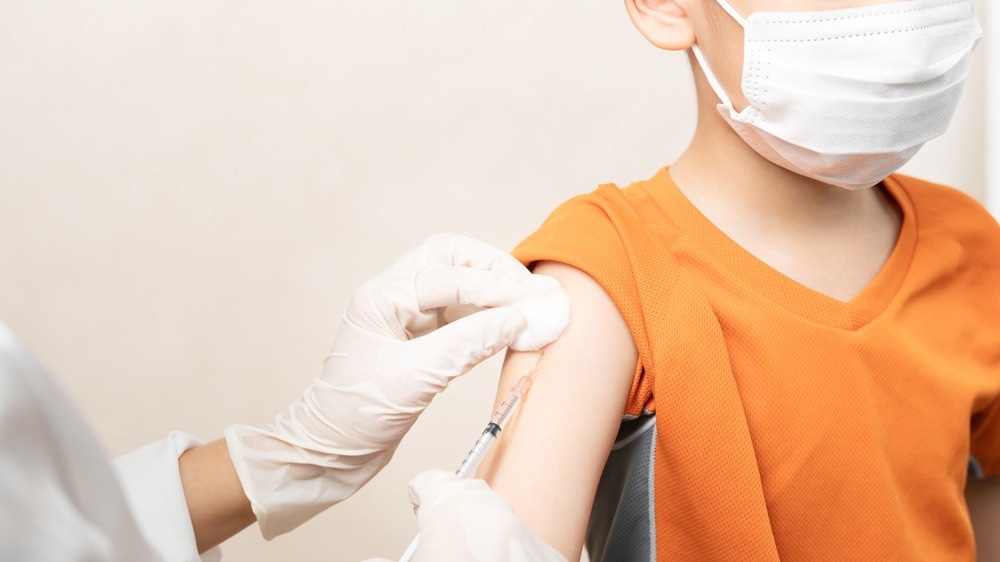 By Neha MathurReviewed by Danielle Ellis, B.Sc.Jun 8 2023
By Neha MathurReviewed by Danielle Ellis, B.Sc.Jun 8 2023In a recent article published in Pediatrics, researchers presented the results of their rapid cycle analysis (RCA) safety surveillance, which is a weekly surveillance monitoring of monovalent messenger ribonucleic acid (mRNA) coronavirus disease 2019 (COVID-19) vaccines among all children below five years enrolled in the Vaccine Safety Datalink (VSD).
 Study: Safety of COVID-19 mRNA Vaccination Among Young Children in the Vaccine Safety Datalink. Image Credit: myboys.me/Shutterstock.com
Study: Safety of COVID-19 mRNA Vaccination Among Young Children in the Vaccine Safety Datalink. Image Credit: myboys.me/Shutterstock.com
Background
Within VSD, a collaboration between the Centers for Disease Control and Prevention (CDC) and eight United States health systems, these children comprised the youngest age group. VSD maintains electronic medical records (EMRs) of nearly 0.5 million children under five years, including their COVID-19 vaccination data. They obtain this data from state immunization registries and retail pharmacies and update it weekly for 23 pre-outlined safety outcomes, including myocarditis, pericarditis, and seizures. Additionally, they weekly update VSD data for descriptive monitoring, including anaphylaxis.
In their previous assessment of the safety of monovalent mRNA technology-based COVID-19 vaccines in individuals aged five years and older, the authors observed an increased risk for myocarditis and pericarditis in younger males, particularly after receiving the second dose of the primary vaccination series. However, data on COVID-19 vaccine safety among children below five years are scarce.
About the study
In the present study, researchers compared all adverse outcomes post mRNA vaccination in primary vaccine series recipients during a risk period of one to 21 days with those observed among primary series vaccinated comparators after 22 to 42 days post-vaccination. In particular, researchers reviewed EMRs of all cases of myocarditis/pericarditis, anaphylaxis, and a few other prespecified adverse outcomes.
For instance, they used prespecified risk intervals for seizures, i.e., risk intervals of zero to seven and zero to 21 days post-vaccination. Further, the researchers used Poisson regression to estimate adjusted rate ratios (RRs) and their 95% confidence intervals (CIs), adjusting for race/ethnicity, gender, age, vaccination site, and calendar day of vaccine receipt. Furthermore, they outlined a signaling threshold of a one-sided p-value of less than 0.011. It was based on the assumption that vaccine uptake was inconsistent during the whole year of weekly monitoring.
Results
Between June 18, 2022, and March 18, 2023, children aged six months to four years in the VSD population received 135,005 mRNA COVID-19 vaccine doses, and those aged six months to five years received 112,006 vaccine doses.
Health authorities have authorized the Pfizer-BioNTech mRNA COVID-19 vaccine as a three-dose series for children aged six months to four years. Likewise, they have authorized the Moderna vaccine for children aged six months to five years as a two-dose series.
In the risk period evaluated in this study, the authors noted no adverse outcomes, including myocarditis/pericarditis, following vaccination. Also, post-vaccination, no outcome met the set signaling threshold of a p-value less than 0.011, and the authors did not see any elevation in the RRs for any of the prespecified outcomes. Thus, the RRs for convulsions and seizures in zero to seven days post-vaccination remained at values of 0.64 and 0.85 after receipt of two vaccinations, respectively.
Exceptionally, the researchers observed that two children with congenital issues suffered from hemorrhagic stroke and pulmonary embolism post-vaccination; however, their chart review found no correlation between these outcomes with vaccination.
In descriptive analyses, they found one case of anaphylaxis, though it was unrelated to COVID-19 mRNA vaccination. Similarly, they detected a multisystem inflammatory syndrome in children (MIS-C) cases post-vaccination, but the child's chart review suggested that the child developed COVID-19 post-vaccination but before MIS-C diagnosis.
It is also noteworthy that COVID-19 vaccine uptake was low in the evaluated VSD population; accordingly, only 24.7% of the children in VSD received one vaccine dose, with vaccination uptake ranging between 6.6% and 30.2% across VSD sites.
Conclusions
Overall, the current interim analysis of RCA safety surveillance of >245000 COVID-19 mRNA vaccine doses for almost a year detected no safety signal for any adverse or other outcomes during 21 days post-vaccination in children aged ≤five years.
Thus, COVID-19 mRNA vaccines showed a favorable safety profile in children, especially concerning adverse outcomes like myocarditis/pericarditis, in agreement with observations made in phase III clinical trials of these vaccines and other safety monitoring programs.
The current RCA safety surveillance results reassured policymakers, clinicians, and patients that serious outcomes post mRNA vaccination was low in children below five years, at least in the risk interval evaluated in this study. Moreover, this safety surveillance is ongoing.